Open Data Policy
This is data that is used, reused, distributed, or distributed with others via electronic mail, which aims to enhance the rate of knowledge sharing. Therefore, as mentioned above, the Hail Region Development Authority works to serve open and complete data with scientific support only.
The Hail Region Development Authority aims to achieve the strategic goals of open data by providing open data as follows:
• Increase transparency
• Promoting innovation
• Empowering the Hail region’s economy based on data
• Support data-driven decision making
• Encouraging investment in the region
The Hail Region Development Authority aims to achieve the strategic goals of open data by providing open data as follows:
• Increase transparency
• Promoting innovation
• Empowering the Hail region’s economy based on data
• Support data-driven decision making
• Encouraging investment in the region
Main Principles of Open Data
1. The principle of data is availability: This principle ensures that public authority data is made available to everyone by disclosing it, enabling access to it, or using it, unless its nature requires not disclosing it or protecting its privacy or confidentiality.
2. Open format and machine readability: Data is made available and provided in a machine readable format that allows it to be processed. So they are saved in commonly used file formats such as: (CSV, XLS, JSON, XML
3. Data freshness: The latest version of the dataset is published regularly and made available to everyone as soon as it becomes available.
4. Comprehensiveness: Open data sets must be comprehensive and include as much detail as possible, and reflect the recorded data in a way that does not conflict with the personal data protection policy.
5. Non-discrimination: Data sets must be made available to everyone without discrimination and without the need to register on the platform.
6. Without financial compensation: Open data must be made available to everyone for free.
7. Open data licensing in the Kingdom: Open data must be subject to a license that specifies the regulatory basis for using open data as well as the conditions, obligations, and restrictions imposed on the user.
8. Developing a governance model and engaging everyone: Open data enables the process of access and participation for all, enhances the transparency and accountability of public entities, and supports the decision-making process and service provision.
9. Comprehensive development and innovation: The reuse of open data must be promoted. There must also be integration between various entities to prepare the next generation of innovators in the field of open data, and to involve individuals and institutions in general.
2. Open format and machine readability: Data is made available and provided in a machine readable format that allows it to be processed. So they are saved in commonly used file formats such as: (CSV, XLS, JSON, XML
3. Data freshness: The latest version of the dataset is published regularly and made available to everyone as soon as it becomes available.
4. Comprehensiveness: Open data sets must be comprehensive and include as much detail as possible, and reflect the recorded data in a way that does not conflict with the personal data protection policy.
5. Non-discrimination: Data sets must be made available to everyone without discrimination and without the need to register on the platform.
6. Without financial compensation: Open data must be made available to everyone for free.
7. Open data licensing in the Kingdom: Open data must be subject to a license that specifies the regulatory basis for using open data as well as the conditions, obligations, and restrictions imposed on the user.
8. Developing a governance model and engaging everyone: Open data enables the process of access and participation for all, enhances the transparency and accountability of public entities, and supports the decision-making process and service provision.
9. Comprehensive development and innovation: The reuse of open data must be promoted. There must also be integration between various entities to prepare the next generation of innovators in the field of open data, and to involve individuals and institutions in general.
Terms of Use for Open Data
• The user must not misrepresent this data or its source.
• Do not use this data for political purposes or to support illegal activity or activity that violates the laws and legislation of the Kingdom of Saudi Arabia.
• Hail Region Development Authority must be mentioned when using its data to preserve HRDA’s intellectual property.
• Do not use this data for political purposes or to support illegal activity or activity that violates the laws and legislation of the Kingdom of Saudi Arabia.
• Hail Region Development Authority must be mentioned when using its data to preserve HRDA’s intellectual property.
Open Data Library
Hail Region Development Authority aimed to enhance transparency and encourage electronic participation by providing open data to all visitors. This data is published to provide access to various sets of data published by HRDA in multiple formats, facilitating the process of processing and reusing it.
The data contains real estate prices in the Hail region and the rate of change in them from 2019 to 2023
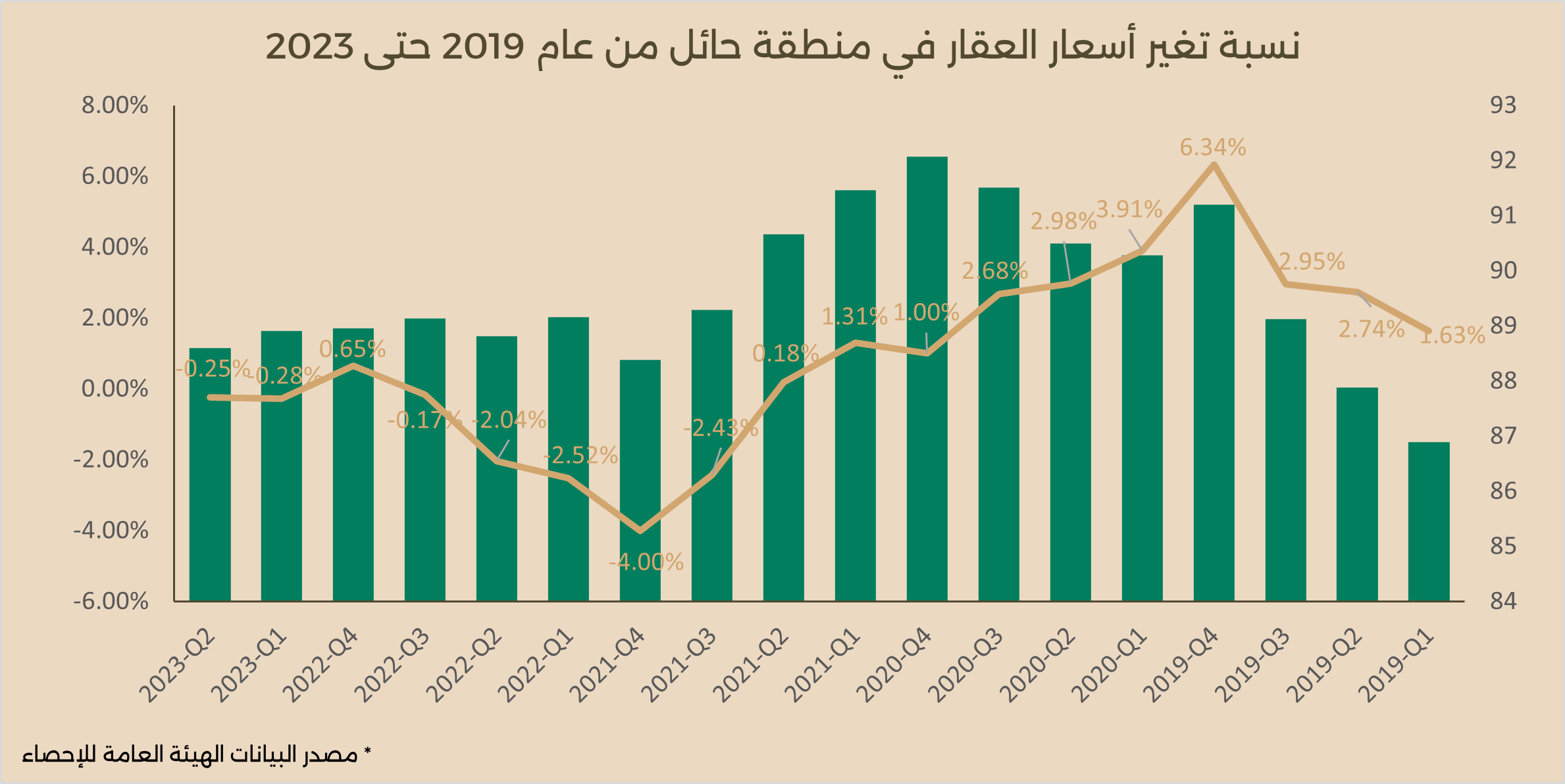
Percentage change in real estate prices 2019-2023
Click here to download data source
The data contains the number of housing units (inhabited by Saudi families) in the Hail region in terms of housing type. The chart below shows a decrease in the percentage of rental housing units, which decreased by 5% in 2022 compared to 2017.

Statistics 2017
Click here to download data source

Statistics 2018
Click here to download data source

Statistics 2019
Click here to download data source

Statistics 2022
Click here to download data source
The data contains the number of Saudi male and female workers and foreign male and female workers according to the size of the establishment (micro, small, medium, and large using the establishment classification) and economic activity (using the National Classification of Economic Activities (ISIC4) second level) in the Hail region for the years 2022 and 2023
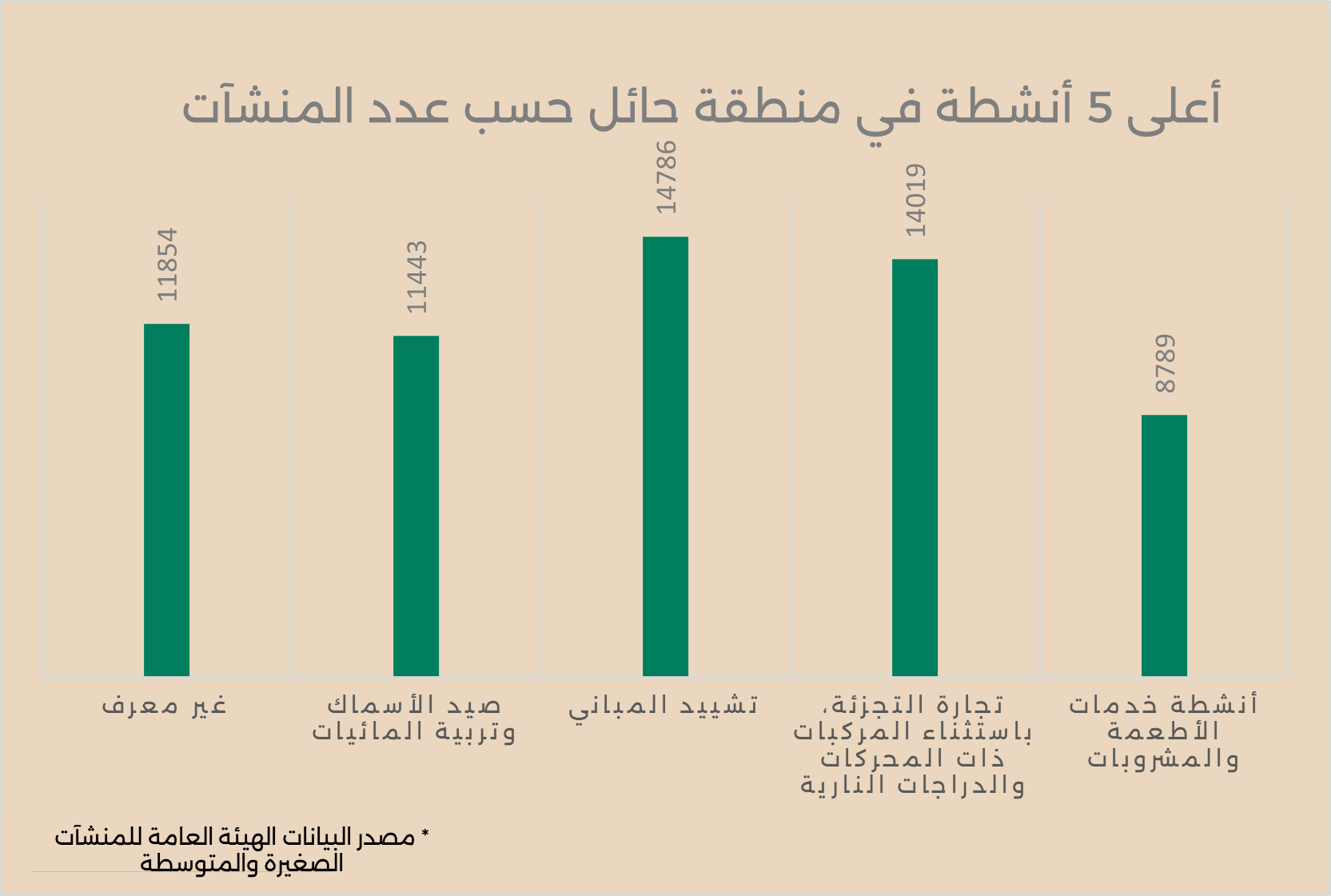
Top 5 establishment activities for 2022 and 2023
Click here to download data source
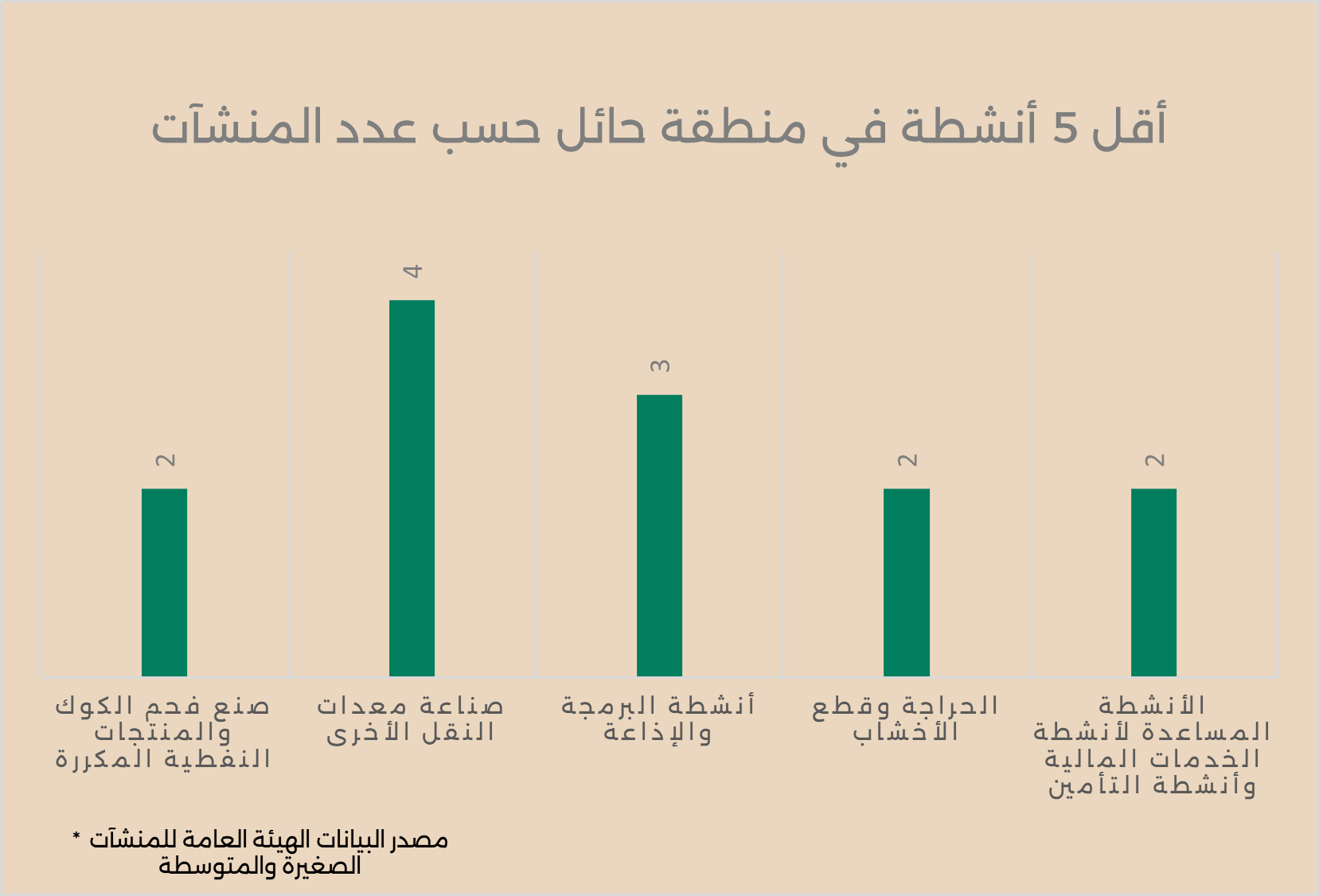
The 5 least establishment activities for 2022 and 2023
Click here to download data source
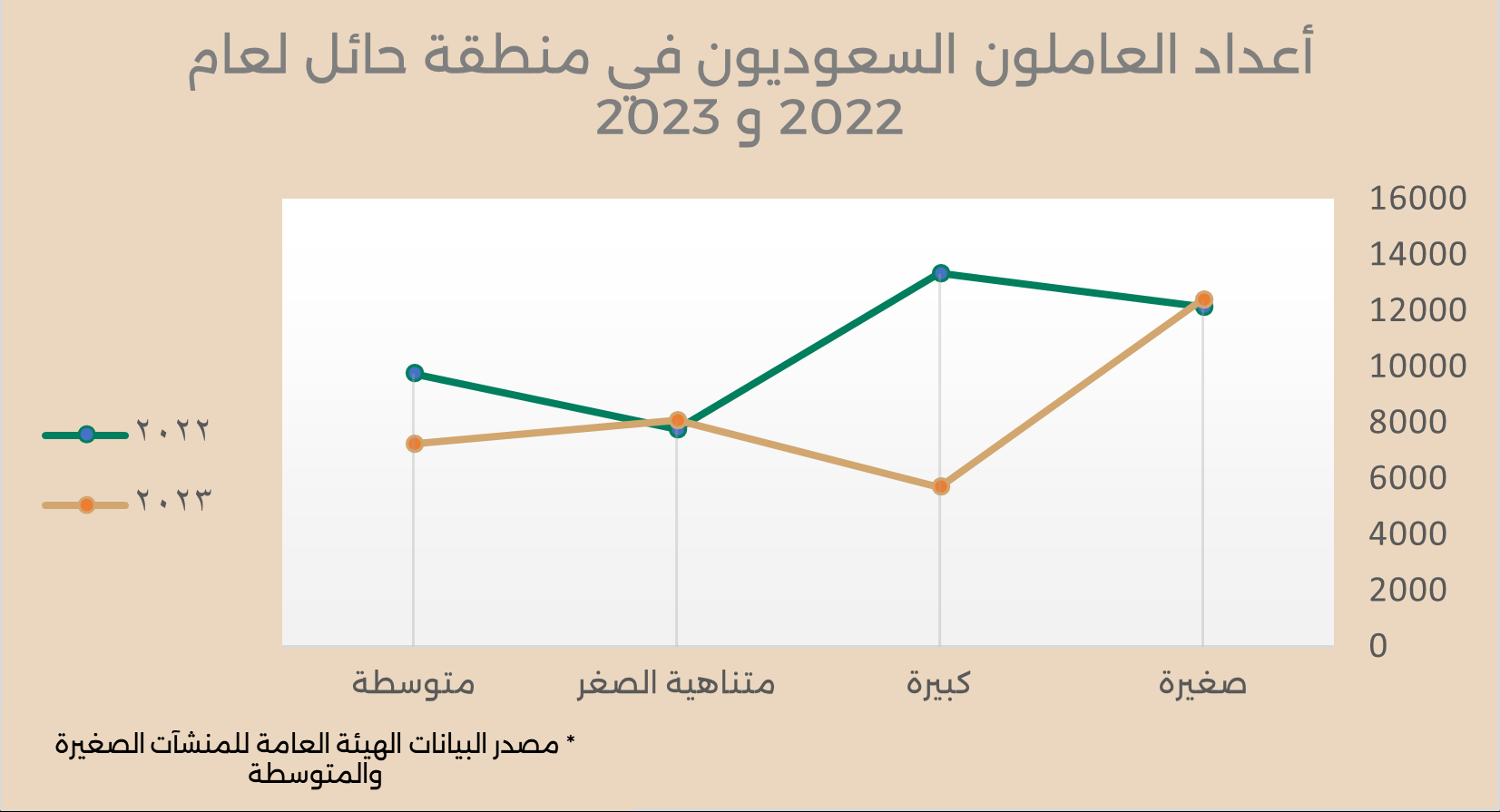
Number of Saudi workers 2022 and 2023
Click here to download data source
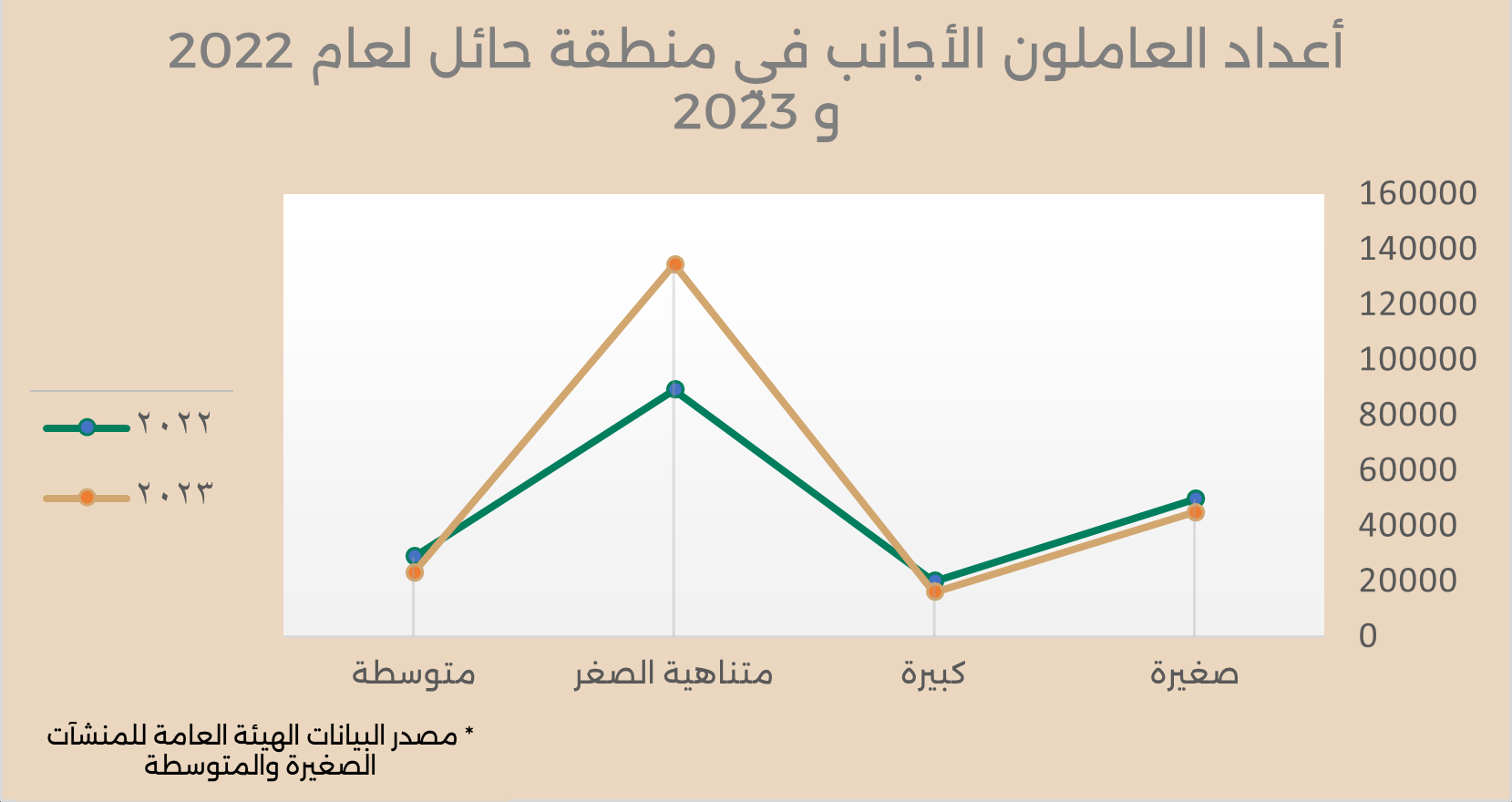
Numbers of foreign workers 2022 and 2023
Click here to download data source
The data contains the number of establishments by establishment size (micro, small, medium, and large using the establishment classification) and economic activity (using the National Classification of Economic Activities (ISIC4) second level) in the Hail region from 2016 AD until 2023
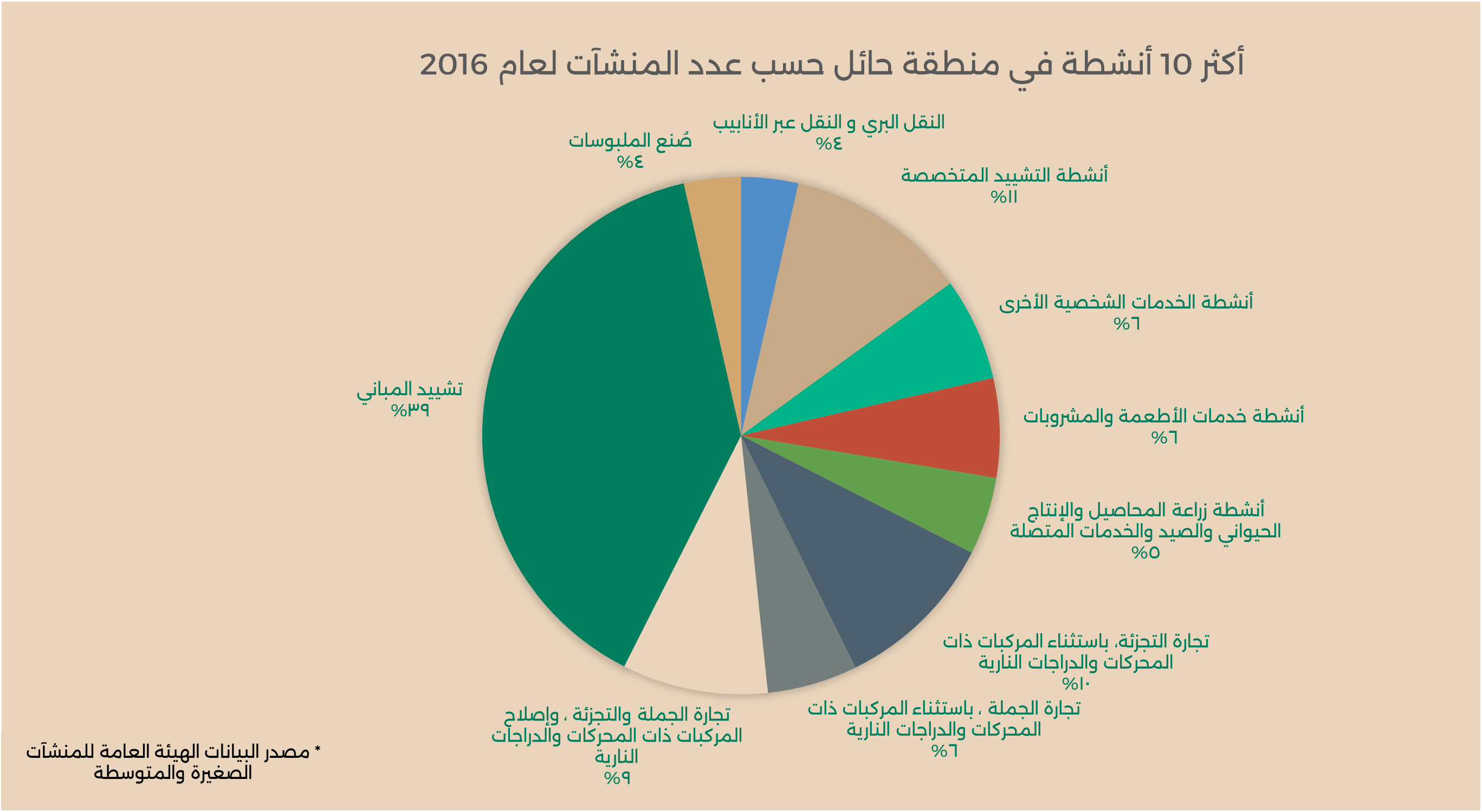
Number of establishments in 2016
Click here to download data source
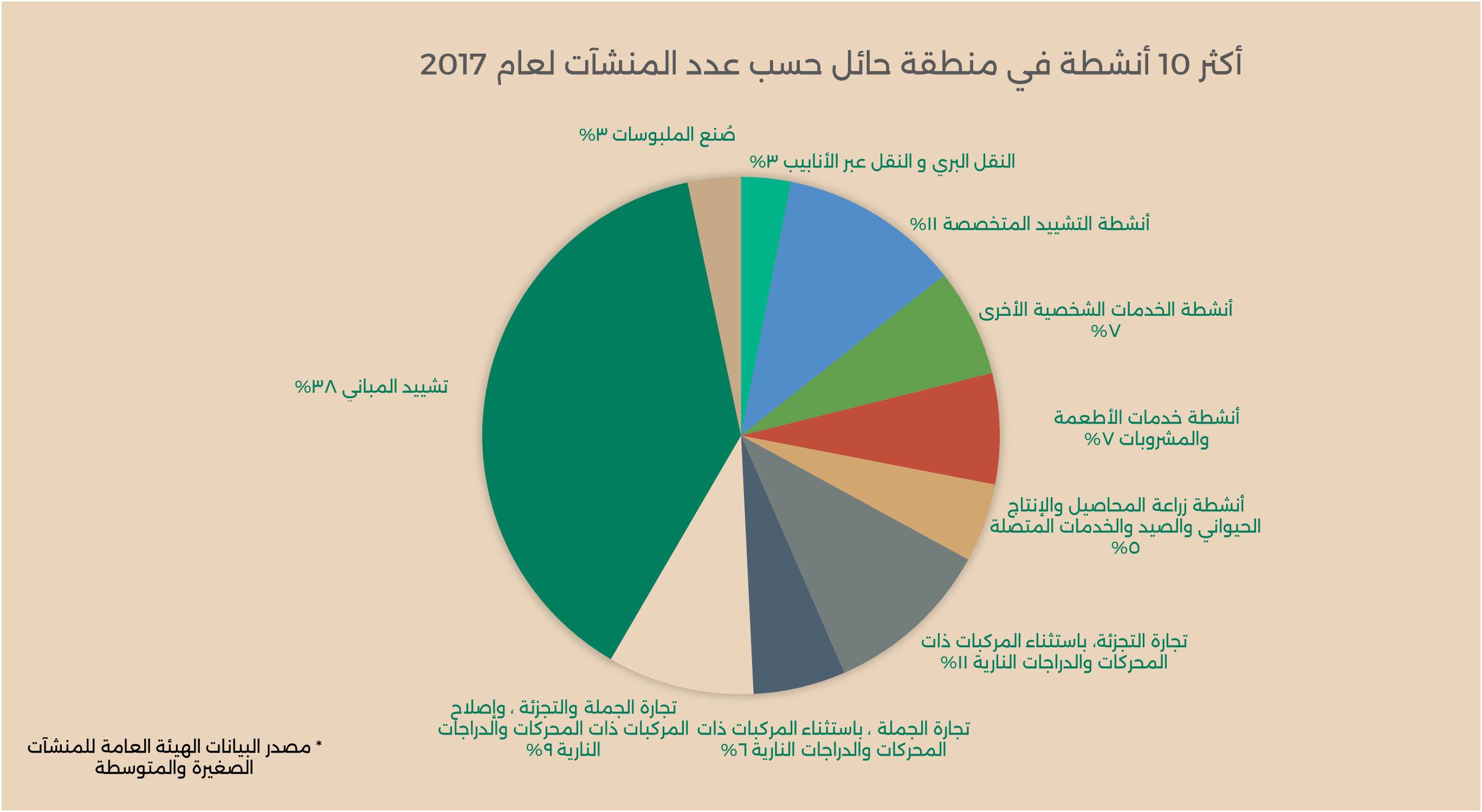
Number of establishments in 2017
Click here to download data source
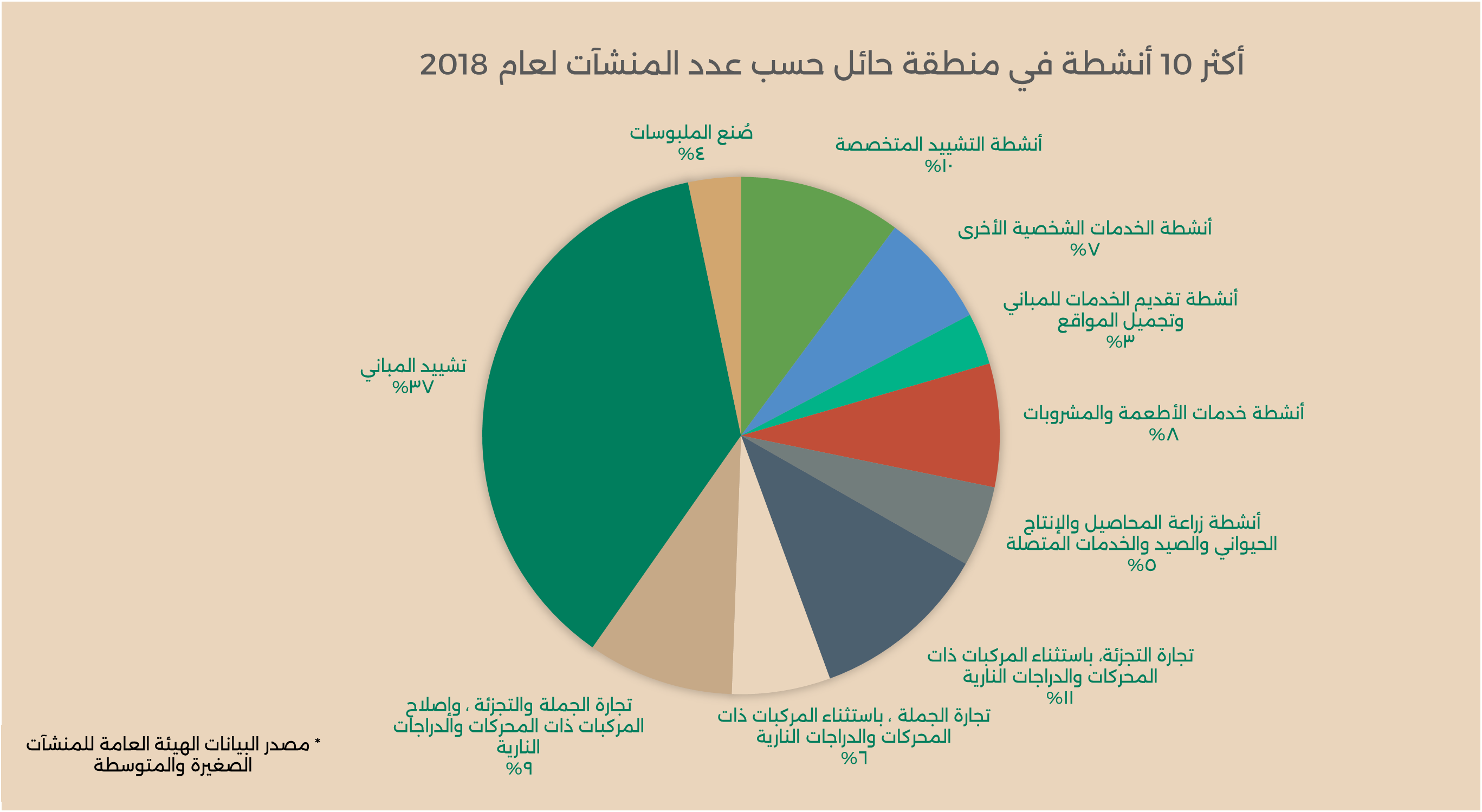
Number of establishments in 2018
Click here to download data source
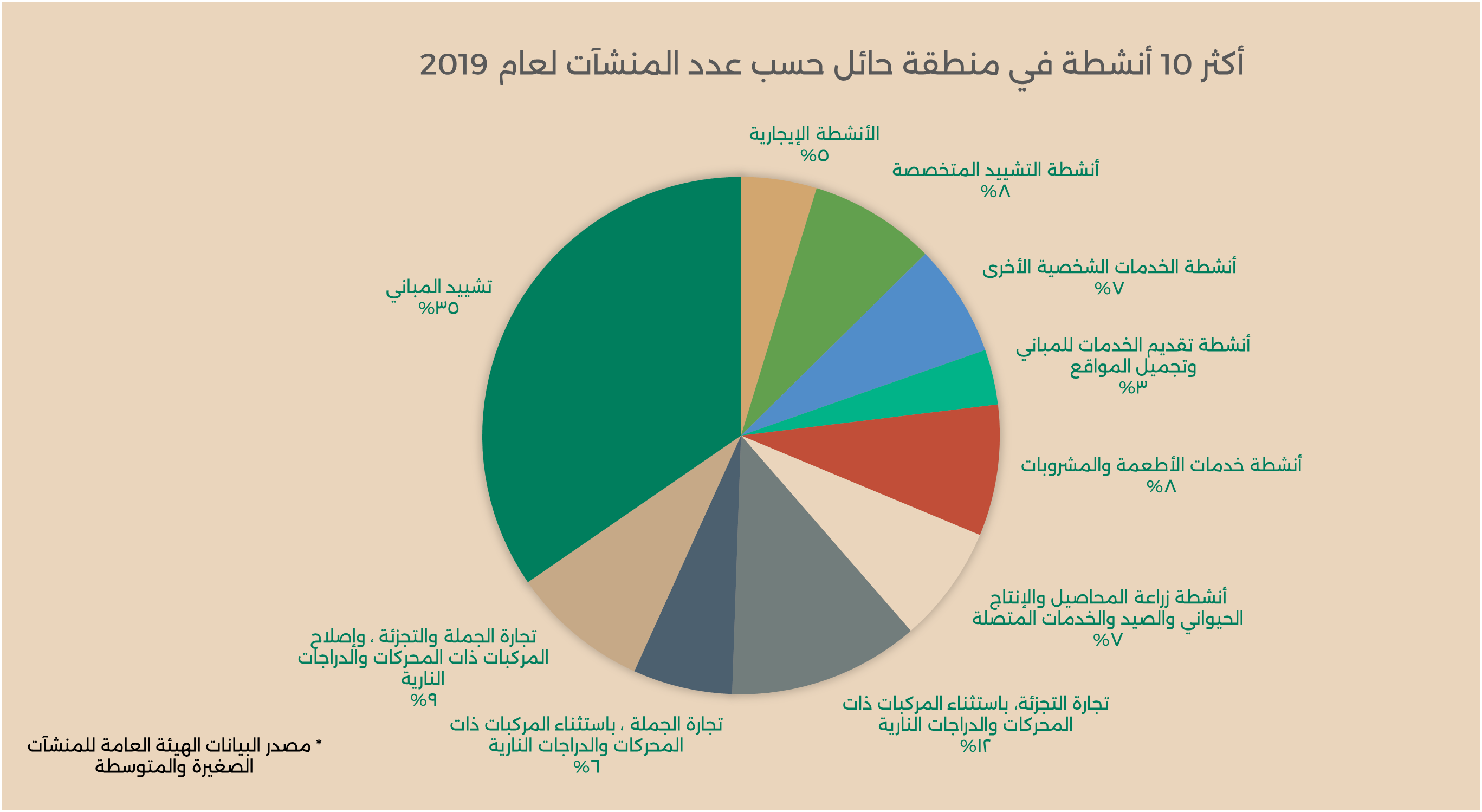
Number of establishments in 2019
Click here to download data source
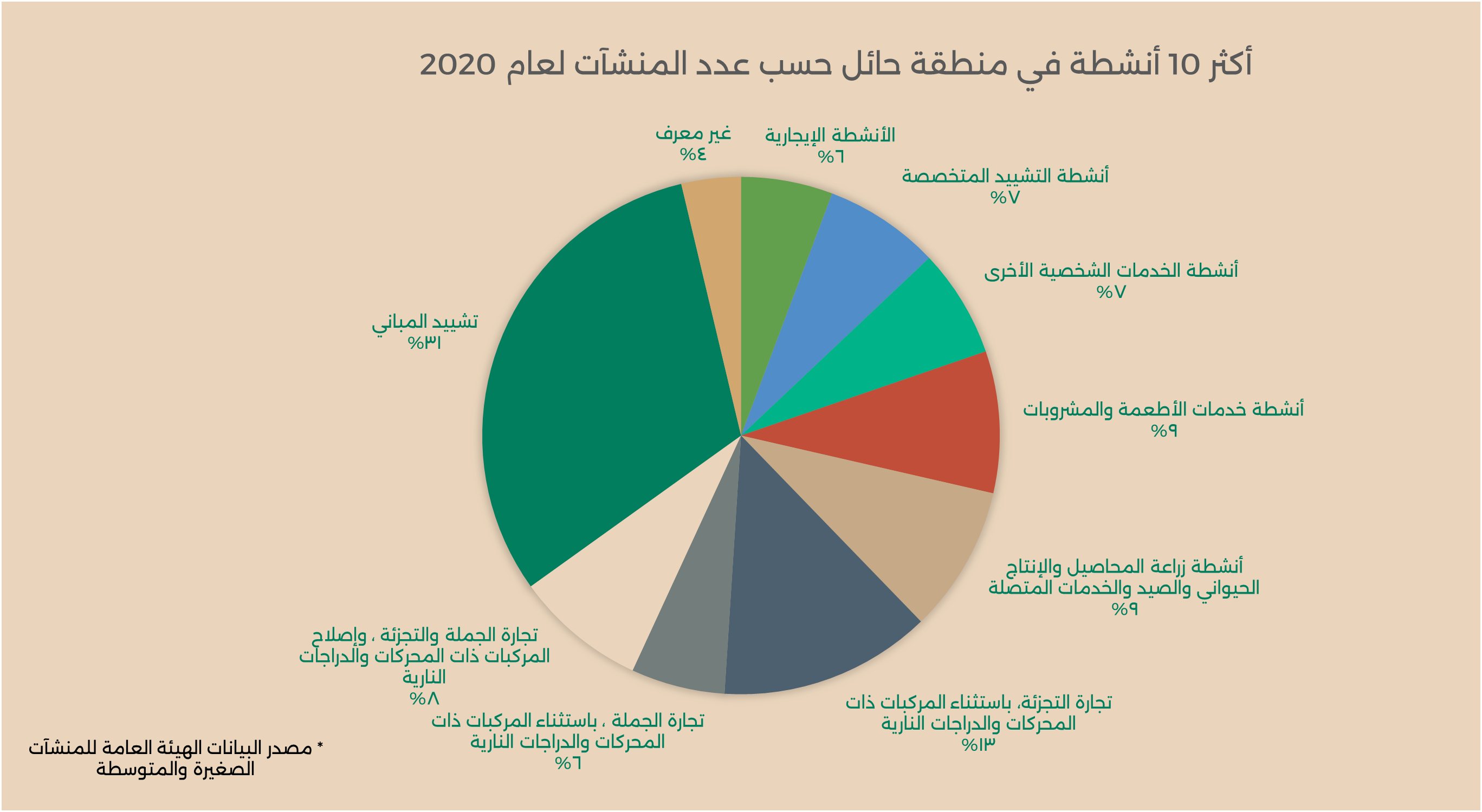
Number of establishments in 2020
Click here to download data source
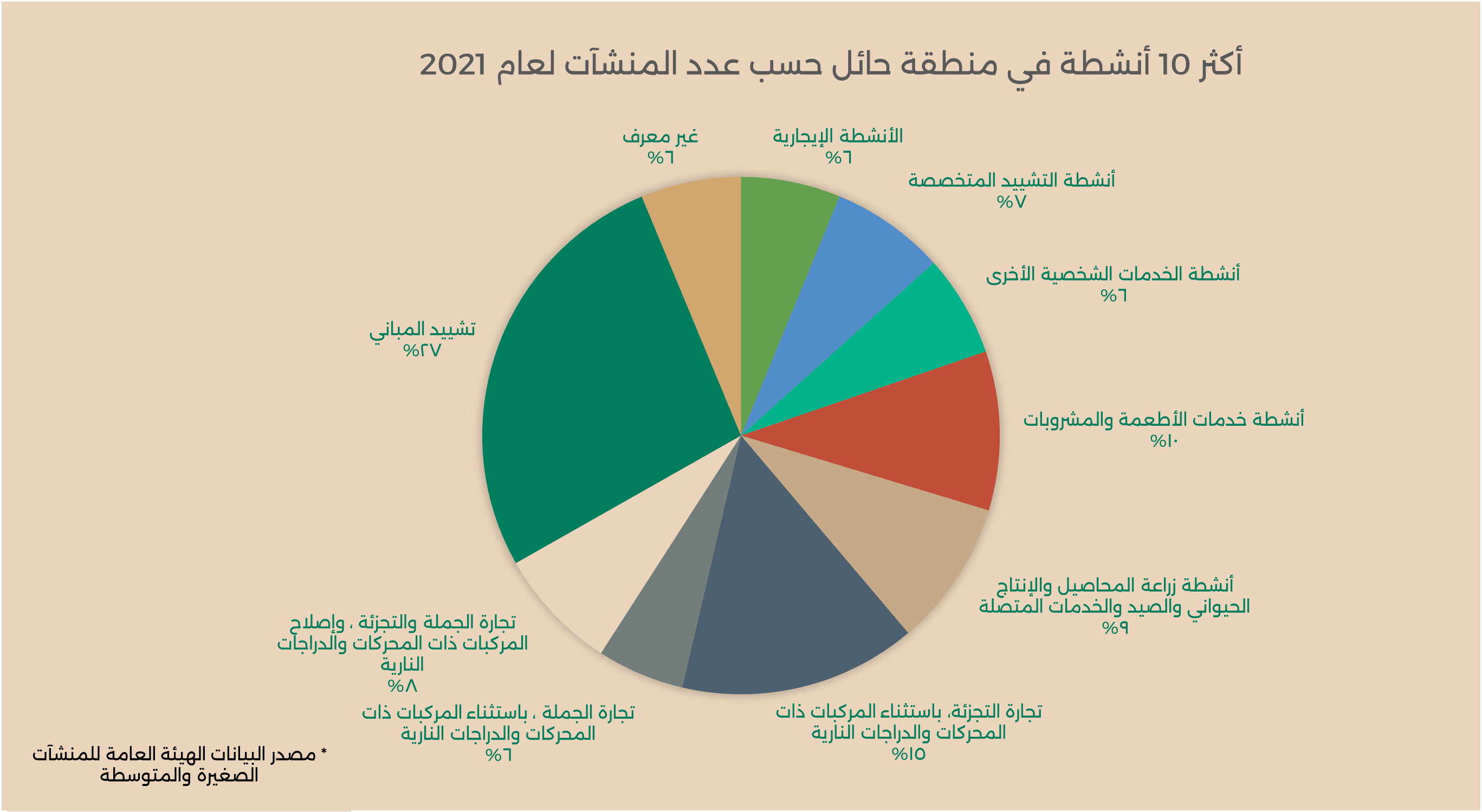
Number of establishments in 2021
Click here to download data source
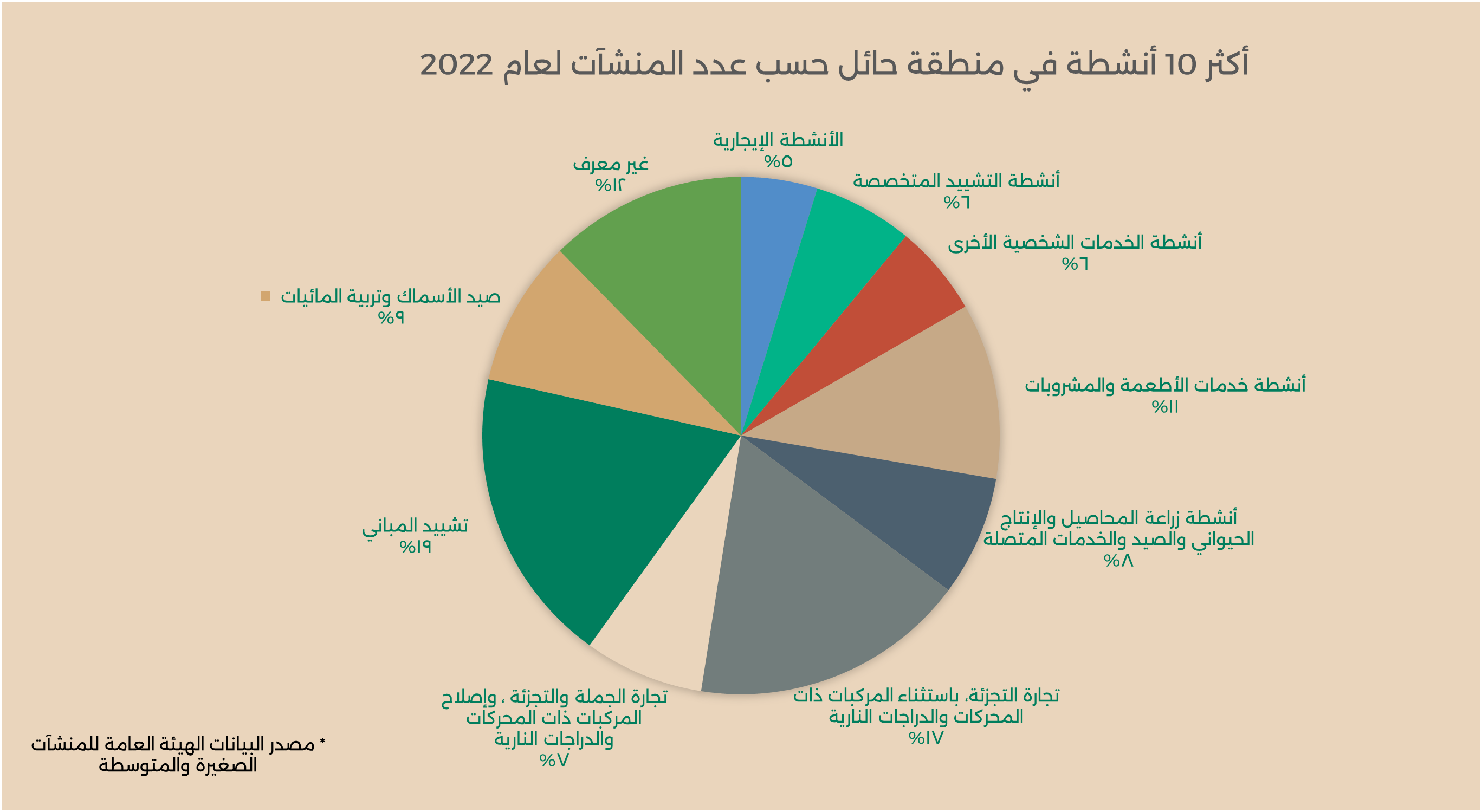
Number of establishments in 2022
Click here to download data source
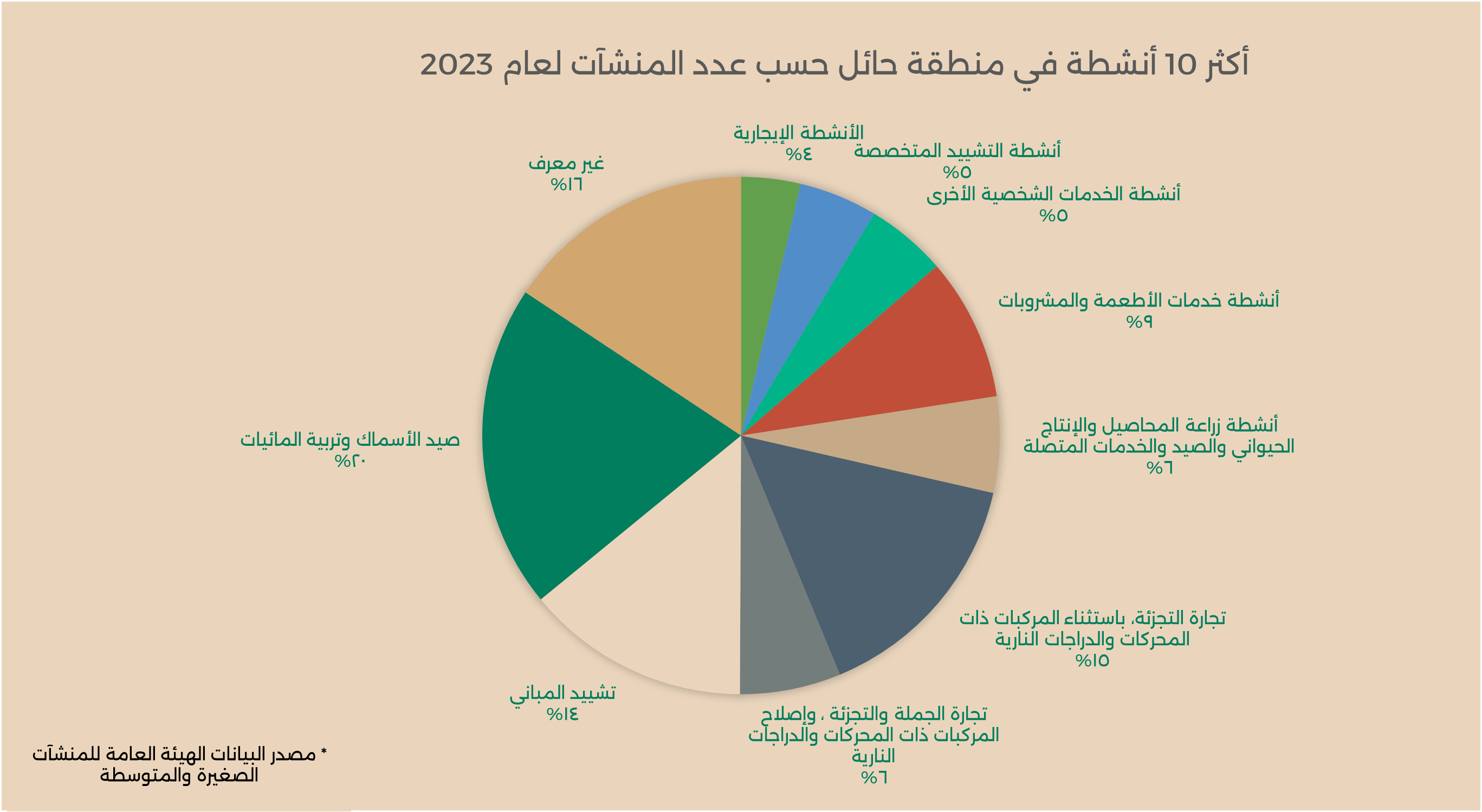
Social Share